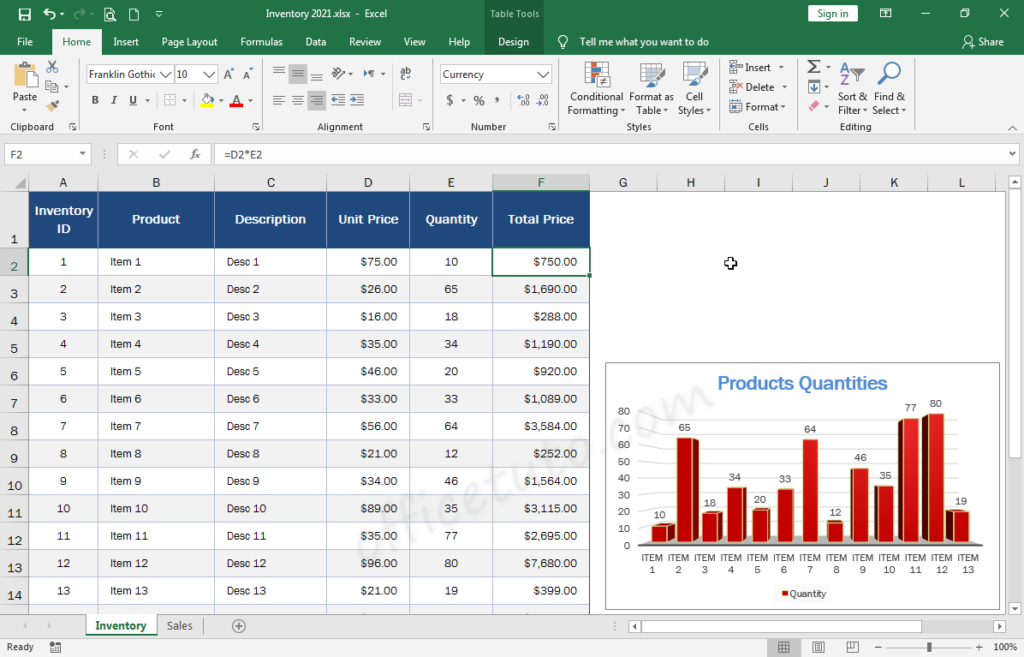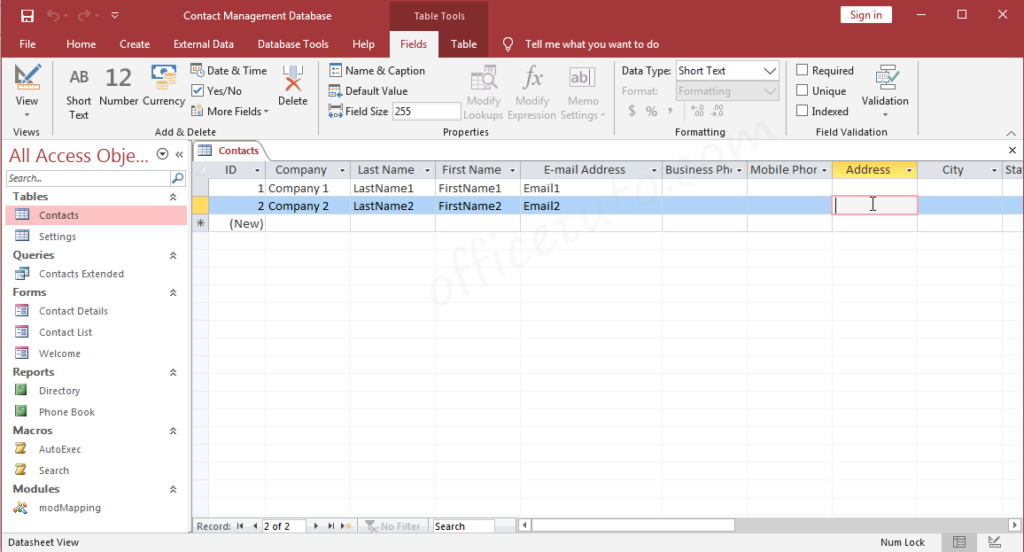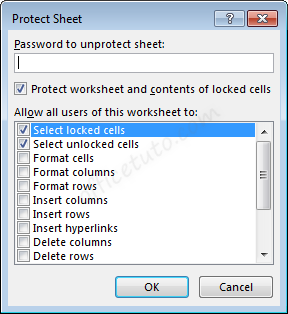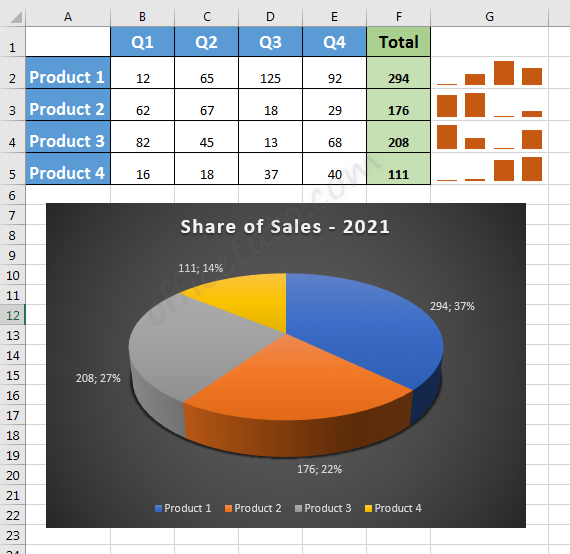An Excel spreadsheet can be comparable to a database visually, as they are both organized in a tabular format; however, they are two different things and present a lot of differences that distinguish one from the other.
The differences between an Excel spreadsheet and a database are :
- Excel sheet has cells; a database has records.
- Excel spreadsheet structure is more flexible.
- A database is more rigorous with data types.
- Database stores more data than a spreadsheet.
- A database can contain relationships.
- A database can be accessed by multiple users.
- A database provides secured access privileges.
- Excel sheet is better in presenting data.
- For large data, a database is more performant.
- Excel is more beginner-friendly than DBMS.
Before we dive in details into all these differences, let’s first start with a definition of an Excel spreadsheet and a database.
1- What is an Excel spreadsheet?
An Excel spreadsheet is a tabular set of rows and columns that allows you to enter data in cells, as well as their formatting, sorting, filtering, all forms of calculation through formulas and functions, their presentation in the form of graphics, and performing data analysis and data modeling.
See the example below:

2- What is a database?
A database is an organized set of tables that allow storing and retrieving related data. Each table is organized in fields (or attributes) and records that host related data. The fields are the columns, and the records are the rows.
See the following screenshot:

The system or software that allows the user to create and manage databases is called a Database Management System (or DBMS). Some examples of DBMS are Oracle, SQL Server, MySQL, MariaDB, Access, Base, PostgreSQL, dBASE, DB2, FoxPro…
So, now that we know what is an Excel spreadsheet and a database, let’s move on to our main question:
What are the differences between an Excel spreadsheet and a database?
In the following sections, I will detail all the differences that distinguish an Excel spreadsheet and a database, and also tell you when it is more suitable to use an Excel spreadsheet and when it’s better to use a database.
3- Differences between an excel spreadsheet and a database
– A spreadsheet stores data in the cells; a database stores data in the records
The first difference between an Excel spreadsheet and a database is in the structure, or precisely, in the related aspect of data.
An Excel spreadsheet is organized in rows and columns, and data is stored in cells (intersection of rows and columns), while a database is organized in fields (or attributes) and records that can respectively be compared to the columns and the rows of Excel spreadsheets. This is not the same structure, as in an Excel spreadsheet, the information is stored in the cell, whereas in a database, it is stored in the whole record.

Let’s explain this in a little more detail: the data in a database record have to be related; so, all the fields are attributes or “properties” of the record. On the other hand, data stored in Excel cells can be unrelated (or related depending on your case) and each cell content can be stand-alone; you can enter in the cells whatever information you want, without it having to be related to the other cells, even though in most cases, we tend to store related information in the different cells of an Excel dataset; but, you know what, this isn’t mandatory!
Moreover, you can even store, in the same spreadsheet, different data sets that contain different information!
– The structure of an Excel sheet is more flexible than that of a database
In an Excel spreadsheet, you can apply whatever formatting (font and style) you prefer to your cells and their content. You can also easily make any changes you want to the rows, columns, and cells: add some, delete, change height and width, or reorganize, etc. Whereas a database is in general one way of style and format for each field and focuses more on providing the raw information, with no specific formatting.
– A database is more rigorous with data types than an Excel spreadsheet
In an Excel spreadsheet, you can enter data with different formats or types (number, text, date, etc) in the same row or column, whereas a database is more rigorous with data types entered in the fields.
Databases use two concepts to restrict data entry:
- “Data integrity” in the tables: ensures that the value entered in a field is of the specified data type (e.g. you can’t enter a text into a numeric field) or doesn’t exceed the specified length;
- and “Referential integrity” in the relationships between tables: ensures the referenced value in another table really exists.
The flexibility and freedom offered by Excel for entered data can be seen as an advantage for the user, except that this same flexibility can be costly and lead the user to make mistakes when entering new data, which can affect applied formulas and skew results. Fortunately, there is a solution provided by Excel that you can use to restrict data entry and prevent errors, which is the “Data Validation” tool from the “Data” tab of the Excel ribbon.
Anyway, the flexibility versus the rigor can be considered by the user as an advantage or on the contrary as a disadvantage, depending on the context and the type of the project. Sometimes more flexibility accelerates the workflow, and other times the rigor is necessary and even vital.
– A database can store more data than an Excel spreadsheet
Compared to an Excel spreadsheet, a database is by design more suitable to handle large amounts of data.
And, although an Excel spreadsheet is supposedly able to have up to 1,048,576 rows and 16,384 columns filled with data, this is just theoretical as it really depends on the complexity of the information being handled and on your device specifications, particularly its memory and processor; actually, in practice expect Excel to be extremely slow, if not unresponsive, when dealing with such large amounts of data.
– Most databases are relational, while Excel spreadsheets are flat
There are some Database Management Systems that are not relational, but most of the popular ones are relational, meaning tables are logically connected through relationships, and data are linked and cross-referenced to avoid data redundancy as much as possible.
On the other hand, Excel spreadsheets are initially flat, meaning each one of them is single and stand-alone, with no links or references from other worksheets. This is often a source of data redundancy.
Also, thanks to the relational aspect, updates are efficient in a relational database compared to an Excel spreadsheet. In a database, you update the information in one table and it is automatically updated in all the others, while in a spreadsheet, you need to track every occurrence of this information and edit it.
– A database can be accessed by multiple users
A database provides multi-user collaboration as it can be accessed simultaneously by multiple users, as opposed to an Excel spreadsheet where only one user can edit the worksheet at a time.
– A database provides secured access privileges
In addition to providing multi-user collaboration, a database has the ability to ensure secured access with different privileges for every user; so, a user can for example have all the access privileges or just some of them to select, insert, update, or delete records of any table or a specific table.
In contrast, an Excel spreadsheet doesn’t allow this type of restriction per user as it can’t be simultaneously accessed by multiple users; however, it provides another type of security by allowing the setting of some restrictions per file for all the users. These are of course two different things, but still, Excel allows certain security to its users, even though it’s not the same level as offered by a database.

– Excel spreadsheet is better in presenting data than a database
In an Excel spreadsheet, you can automatically insert charts and sparklines to graphically present your data, as well as use the conditional formatting feature to add some colors or styles to your cells depending on the criteria you define. This can’t be done in a database unless you use external tools.

– For large data, a database is more performant than an Excel spreadsheet
When opening an Excel workbook, the whole file is loaded in memory, as opposed to a database system that loads only requested objects.
So, when dealing with large data, an Excel spreadsheet would consume a lot of memory compared to a database, which can affect its performance (especially, for the 32-bit editions), depending on your system resources. Also, when you work with large volumes of data on the Excel 32-bit editions and have a lot of installed add-ins, just expect a slow behavior from your workbook, as the virtual address space available for Excel and limited to 2GB of RAM will be shared between the workbook and these add-ins.
– Excel is more beginner friendly than DBMS
Microsoft Excel has been the world’s most popular spreadsheet software for many years, so most beginners will know how to use it and will find help on the internet if they run into any problems. On the other hand, database systems are much less used, are a bit more difficult to learn, and require more expertise to master; that’s why you’ll find them more in the business world.
4- When use an Excel spreadsheet and when use a database?
There is no better choice for all situations between an Excel spreadsheet and a database; you should choose the best option for you, depending on the context, your goals, and your resources.
To help you in making the right decision, I prepared the following table that will guide you through the process of choosing between an Excel spreadsheet and a database.
| Use an Excel spreadsheet | Use a database |
|---|---|
| When you prefer or have to use a beginner-friendly solution for your data storage and analysis. | When you need to work on large data volumes. |
| When you need to make calculations. | When you have enough resources (time, money…) to dedicate to your learning or the training of your team. |
| When you prefer to be able to easily change the structure of the file whenever you want: add or remove rows and columns, change their height and width respectively… | When you have a server system and device that can be dedicated to the database (even if it’s not really a requirement for all databases and DBMS). |
| When you want to be able to apply the formatting you want on your content: font, size, color, cell borders… | When you want to use its built-in data validation to restrict types of entered data. |
| When you need to graphically present your data. | When you need multi-user collaboration. |
| When you want to provide secured access with different privileges for users. | |
| When you want to avoid, at maximum, data redundancy. | |
| When you want to be able to efficiently update your data. |

